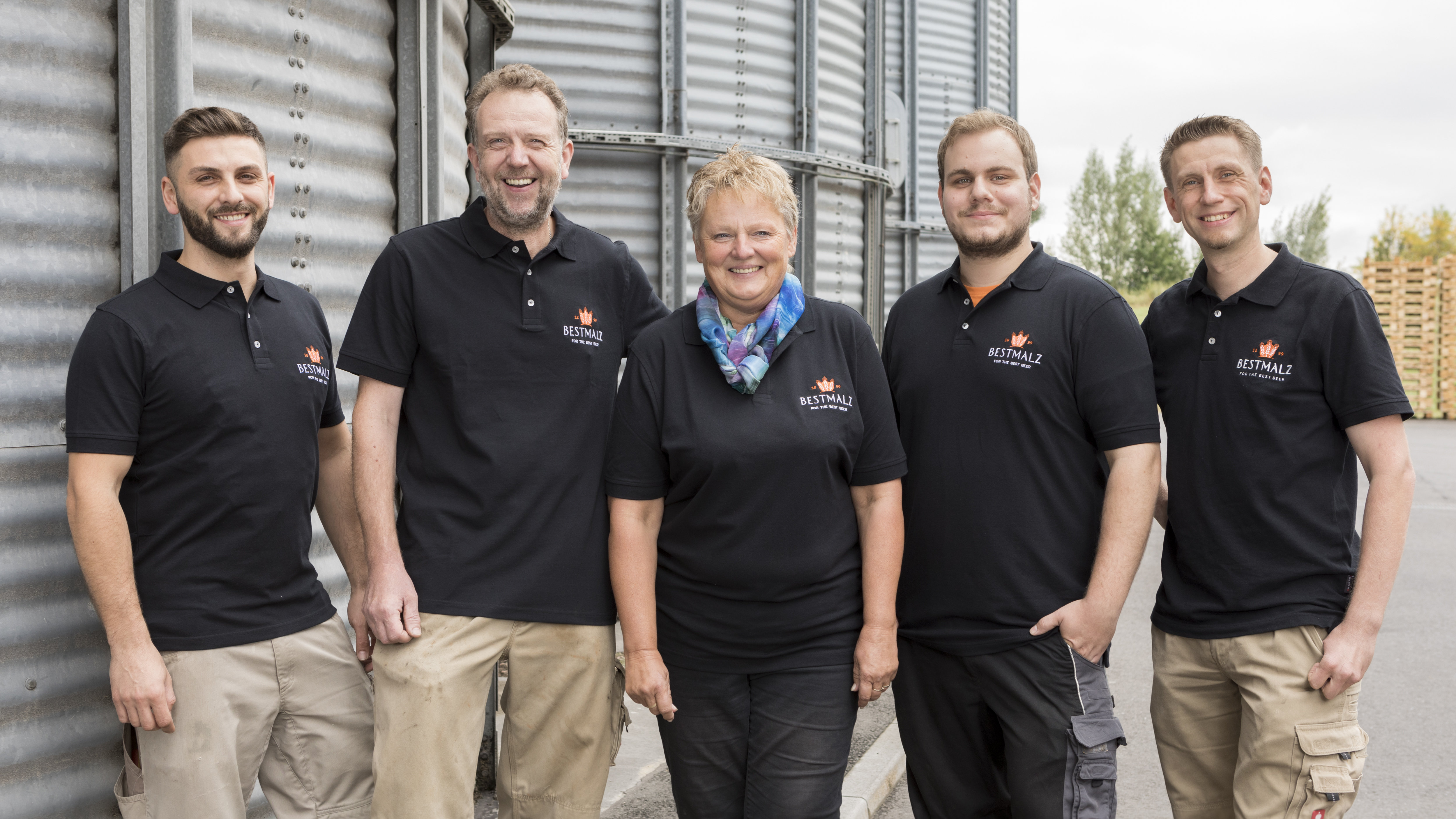In the third and last part of our mini-series about BESTMALZ’s production site in Wallertheim (see here for the first and second part), we take a look at production itself and the team behind it.
When production manager Antonio De Grecis arrives at the malthouse in Wallertheim in the morning, the first thing he does is to check how the malt has developed over night in the germination boxes and take samples to control its quality. By the time the malt reaches the germination line, it has already passed through several process stages: After it has been delivered, the barley is inspected for different quality parameters (water and protein content, impurities, etc.). To this end, samples are taken from different areas of the truck and subjected to a number of tests in the barley laboratory. Only when the desired results have been achieved is the barley accepted.
Malting is a clean business
To ensure that the finished malt is as homogeneous as possible, it not only undergoes continuous quality controls, but also regular cleaning: After it has been accepted, the barley is cleaned with air and sorting sieves to remove any impurities. A Trieur cylinder is used to sift out “bad” kernels, for example, grain other than barley or broken (half) corns. Steeping, which is done in two stages, also has a rinsing effect; after the first steep, the water is drained into the in-house sewage treatment plant. The steeped barley is then transported through pipes to the germinating line, where it is conveyed by turners from one of six germinating compartments to the next. The malt stays in each compartment for one day. Here, again, attention is paid to cleanliness, and several employees in the germination line have the main task of cleaning the grain. Later on in the process, after kilning, the malt is passed through the blow room, where the rootlets are removed.
The laboratory plays an important role
The in-house laboratory is used at various points in the production process. Right at the beginning, when the barley arrives, the quality of the grain is tested here. In the germination line, a sample is taken from each compartment every day to determine its softness. After kilning, which takes one day, each batch is analyzed to check whether the malt has the desired quality. Of course, the laboratory also plays an important role in developing new malts. The quality of the laboratory itself is also assessed in a ring analysis: Laboratories from different malthouses examine malt from the same batch and compare the results.
Flexible team
In addition to deputy plant manager Renè Schneider and production manager Antonio De Grecis, ten further employees work in production – at the plant and equipment, in the laboratory, in the steep tank, on the germination line, at the drying kiln and at the silo area where the barley is delivered. They are trained in all tasks, so that the team can react flexibly in the case of absences. BESTMALZ is also a training company and qualifies apprentices in food technology.
Plenty to do in production
While the malt goes through the production process, Antonio De Grecis and René Schneider have a lot of planning and organizing to do: Day-to-day business usually begins with the production plan, which determines which malts will be produced, includes production itself and ends when the malt is dispatched by the logistics department. The business is also subjected to regular certifications and audits. Finally, the machines have to be maintained and repaired: BESTMALZ has three technicians who ensure that the production and logistics facilities are repaired quickly in the case of malfunctions or a switch in production. Because as René Schneider says, “We cannot afford downtimes. The grain doesn’t stop growing.”
Did you enjoy our mini-series? In the coming weeks and months, we will introduce more teams from BESTMALZ AG, so drop by every now and again.
So far, we have presented the following teams:
Service team at our Heidelberg headquarters:
Quality management at Wallertheim:
Logistics at Wallertheim:

